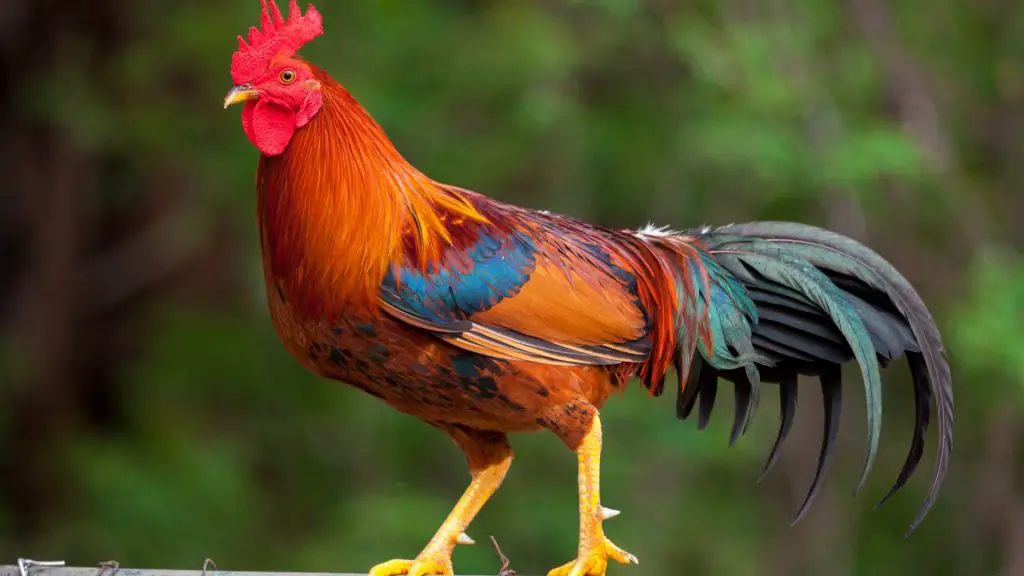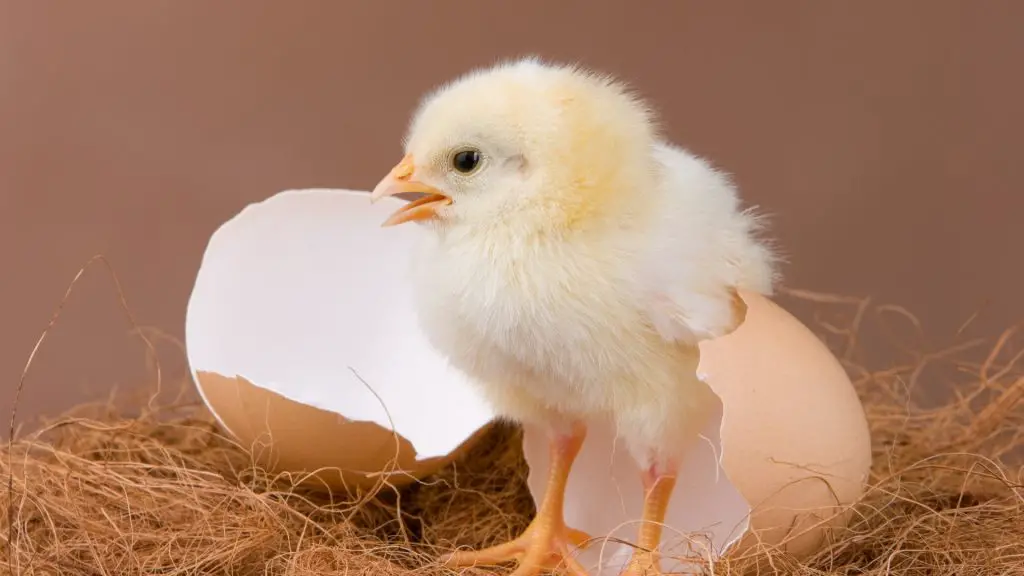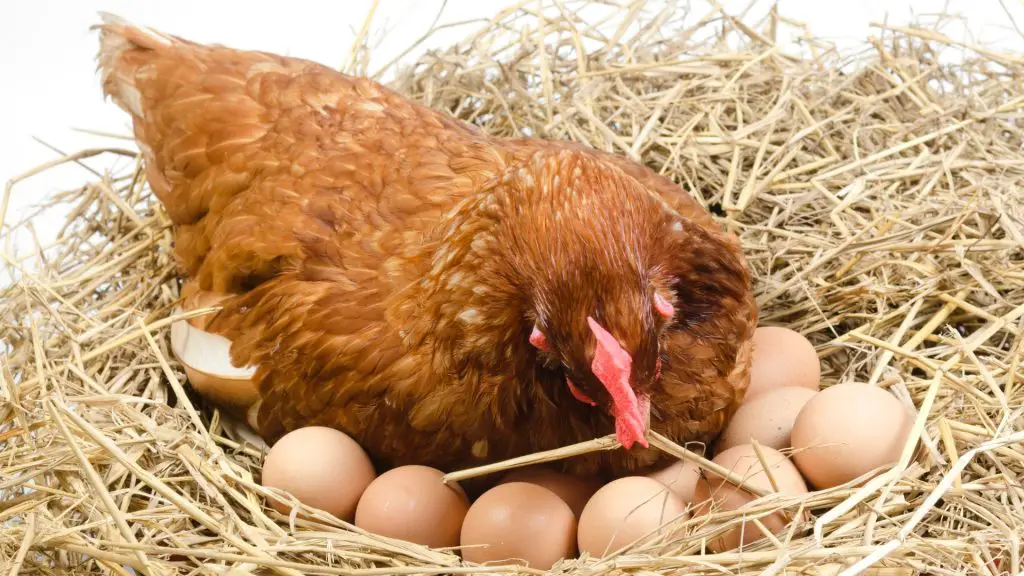Perhaps one of the most common farm animals, chickens are important for egg production, meat production, insect control, and other functions, making them incredibly valuable to own. Most often, chickens and roosters are living alongside one another, raising the question, is a rooster a chicken?
Is a rooster a chicken? Roosters are adult male chickens. The word chicken is a general word used to describe the whole species. Adult male chickens are called roosters, while adult female chickens are called hens. Immature chickens are referred to as chicks, pullets if they’re female, and cockerels if they’re male.
The rest of this article will explore more about chickens, such as determining a chicken’s sex and distinguishing between chickens and roosters. It will also explain how chickens lay eggs and whether or not you need a rooster to do so.
What’s the Difference Between a Chicken and a Rooster?

Though the words chicken and rooster are often used to describe different animals, roosters and chickens are the same species. Like how there are many different words to describe humans, there are many different words to describe chickens.
In terms of species, there is no distinction between roosters and chickens. Both female and male chickens are called chickens. However, when referring to adult male chickens that have reached sexual maturity, the term “rooster” is appropriate for describing them. Adult female chickens are known as “hens.”
Categories to Describe Chickens
There are 4 major categories for describing chickens. Chickens are called different things depending on their age and their gender. Here’s an explanation of the different words used to describe chickens:
- Chicks: These refer to newly-hatched chickens, regardless of their gender.
- Pullets and cockerels: These are chickens that are older than chicks but aren’t old enough to reproduce. The females are known as pullets, whereas the males are known as cockerels.
- Hens and roosters: These are adult chickens, old enough to reproduce. The females are called hens. Meanwhile, the males are called roosters or cocks.
Is a Rooster a Male Chicken?

While it’s common to think of a hen as a female chicken and a rooster as a male chicken, this isn’t always the case. Both female and male chickens, as mentioned above, are referred to differently depending on their age and sexual maturity.
This means that though people often refer to a rooster as a male chicken, this is only partially true.
A rooster is a male chicken that’s old enough to reproduce. Male chickens that are still too young to reproduce aren’t called roosters. They go by different names, such as chicks or cockerels, depending on their age.
So, to be clear, a rooster is a chicken, and it’s a term only used when referring to an adult male chicken that has reached sexual maturity and is ready to reproduce.
How to Tell if a Chick Is a Rooster?

You can tell if a chick is a rooster using 3 techniques: venting/vent sexing, feather sexing, or comb and wattle sexing. When baby chickens are born, males and females look nearly identical, as their reproductive organs are located inside their bodies, and you can’t identify the sex just by looking.
Determining the sex of a chicken is important to understand how the chicken should be raised and the potential activities the chicken can engage in later in life. This process of determining a chicken’s sex, known as sexing, is done in different ways depending on the age of the chicken.
Vent Sexing a Chick
Venting, or vent sexing, is the process of identifying a chick’s sex by observing its internal organs to identify the chick’s reproductive organs.
Chicks are gently squeezed and shifted so that the chick sexer can identify the reproductive organ and determine if the chick is male or female based on the organ’s shape. Although possible, this method is very difficult for the average poultry owner to do properly, hence seldom used.
Feather Sexing a Chick
Feather sexing a chick is a much more common and easier process than venting to determine a chick’s sex. At birth, chicks have different feather development depending on their gender. This is especially true when looking at their wings.
When female chicks are born, most have at least some wing feathers. Male chicks, however, do not. By gently stretching out the chick’s wing and observing how far along the feather development is, one can easily determine the chick’s sex.
Comb and Wattle Sexing a Chick
Comb and feather sexing, though occurring later than feather sexing or venting, is perhaps the most accurate way to determine the sex of a chick. Chickens have combs and wattles, the red leather-feeling material on the top of the head or hanging from the chin that is useful for determining the sex of the bird.
Approximately 4 weeks after a chick is born, the chick will develop the comb and the wattle. For male chicks, these will grow quicker, larger, and more prominently than in female chicks. This means those with further developed combs and wattles are males between weeks 4 and 5, while those with less developed combs and wattles are females.
How to Tell a Chicken From a Rooster?
To differentiate a chicken from a rooster, observe the chicken’s appearance and behavior. This can be done when the chicken has begun to reach sexual maturity. Growing male chickens will develop a distinctive appearance during this life stage, such as darker colors and larger bodies.
So, if the chicken is no longer a chick, simply observe its appearance and behavior to determine its sex.
Hens and Roosters Are Different in Appearance
When chickens grow older, roosters and hens begin to look very different. Generally, roosters are much darker in color and have a larger variety of colors than hens do. Additionally, roosters’ combs and wattles will be much larger than hens, making them look different.
Hens and Roosters Are Different in Behavior
In their sexual maturity, roosters also act and sound very different from hens. Roosters are much more aggressive and violent, whereas hens are calmer and more submissive. Additionally, if a rooster is present in a group of hens, the hens will generally not crow, but roosters will.
Related: What’s the Difference Between a Hen and a Chicken?
Do You Need a Rooster to Have Chicken Eggs?

Chickens will lay eggs regardless of the presence of a rooster. Like most birds, a female hen naturally produces eggs as part of its egg-laying cycle. This means eggs will be laid even in the rooster’s absence, resulting in unhatched eggs. Nevertheless, such eggs can still serve as a delicious food source.
Related: 12 Chicken Breeds That Lay Brown Eggs | Information and Facts
How Chickens Lay Eggs Without a Rooster?
Chickens can lay eggs even if the rooster is absent. The egg-laying process occurs due to a hormonal process activated when a hen is exposed to a certain amount of light. This light activates a gland inside the hen’s brain, causing an oocyte to be released from a hen’s ovaries.
Then, the hen will lay an egg, either fertilized or unfertilized, depending on whether she mated with a rooster.
Suppose the hen and the rooster are mated before the egg is laid. This will cause the egg to be fertilized, allowing for a new chicken to be hatched after about 21 days. However, it won’t hatch if the hen and rooster don’t mate before the egg is laid. An unfertilized egg will get collected as food instead.
While roosters are not necessary for hens to lay eggs, they are necessary to fertilize eggs so that they can hatch and reproduce.
